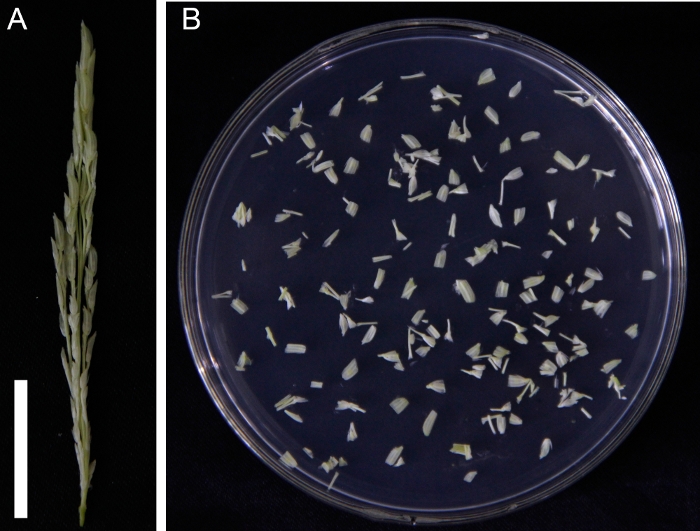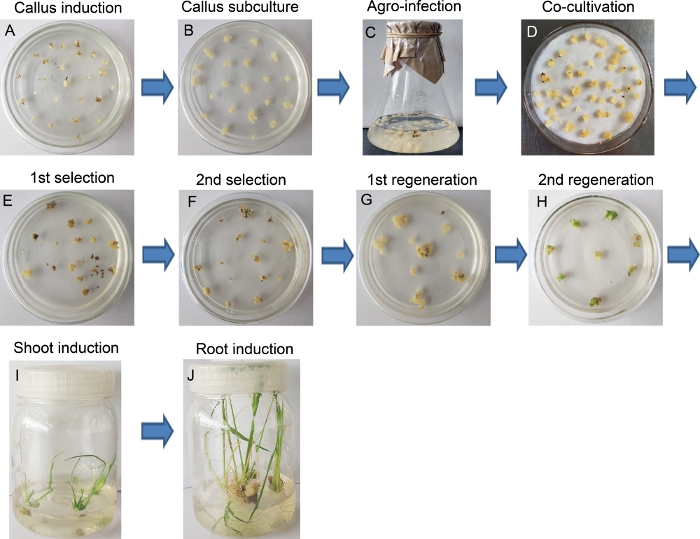A subscription to JoVE is required to view this content. Sign in or start your free trial.
Agrobacterium-Mediated Genetic Transformation: A Method to Genetically Transform the Rice Genome via Genetically Engineered Agrobacterium tumefaciens
Overview
In this video, we demonstrate genetic transformation of the rice genome using an Agrobacterium tumefaciens binary vector. This bacterium facilitates the transfer of a foreign DNA plasmid using Agrobacterium virulence proteins.
Protocol
1. Rice genetic transformation and plant tissue culture
- Callus induction and regeneration
NOTE: Use fresh young rice inflorescences as the starting material to induce callus (Figure 1).- Collect the young inflorescences from the paddy field or green house at meiosis stage, determined by floret length of 1.6-4.8 mm (Figure 1A). Ensure that the rice inflorescences are covered with leaf sheath. Wipe each inflorescence with a 70% alcohol swab an.......
Representative Results

Figure 1: Starting materials for inducing callus. (A) Young rice inflorescences at meiosis stage. (B) Dissected young inflorescences growing on the NBD2 medium. Bar = 2 cm in (A).

Figure 2: Procedure for producing transgenic lines by Agroba.......
Reprints and Permissions
Request permission to reuse the text or figures of this JoVE article
Request PermissionThis article has been published
Video Coming Soon
Source: Xu, D., et al. Agrobacterium-Mediated Genetic Transformation, Transgenic Production, and Its Application for the Study of Male Reproductive Development in Rice. J. Vis. Exp. (2020).
ABOUT JoVE
Copyright © 2025 MyJoVE Corporation. All rights reserved